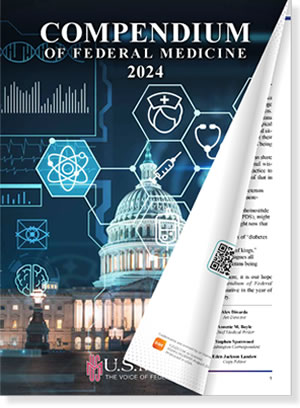The VA’s National Center for PTSD estimates that 11% to 20% of those who served in Iraq or Afghanistan have experienced PTSD, and up to 70% of veterans with combat-related PTSD also have major depressive disorder (MDD). Numerous studies have shown that mental health outcomes are markedly worse for veterans who have both conditions than for those who have either PTSD or MDD alone, but why the two so often co-occur and what factors increase the likelihood of developing both conditions after deployment has remained uncertain.
BOSTON — For as long as humans have fought in battle, warriors have suffered post-traumatic stress disorder. From ancient Assyrian texts to the tale of Gilgamesh to the Odyssey, world literature provides some of the earliest references to the condition called shell shock or battle fatigue in earlier generations. Notably, depression also besets the heroes in these works who have PTSD.
The same remains true today. The VA’s National Center for PTSD estimates that 11% to 20% of those who served in Iraq or Afghanistan have experienced PTSD, and up to 70% of veterans with combat-related PTSD also have major depressive disorder (MDD).
Numerous studies have shown that mental hFor as long as humans have fought in battle, warriors have suffered post-traumatic stress disorder. From ancient Assyrian texts to the tale of Gilgamesh to the Odyssey, world literature provides some of the earliest references to the condition called shell shock or battle fatigue in earlier generations. Notably, depression also besets the heroes in these works who have PTSD.ealth outcomes are markedly worse for veterans who have both conditions than for those who have either PTSD or MDD alone, but why the two so often co-occur and what factors increase the likelihood of developing both conditions after deployment has remained uncertain. Researchers at Massachusetts General Hospital in Boston as well as the San Francisco VAMC, VA Ann Arbor Healthcare System, VA Atlanta Healthcare System, and other institutions sought to shed some light on the connection.1
“It would be useful to better understand the potential role of adverse social and interpersonal events that may incur risk for developing comorbid depression and to consider their timeframe of occurrence in relation to the deployment cycle,” wrote the authors. “Such factors can be relatively easily studied and are potentially malleable, making them possible targets for prevention and early intervention.”
In a study published in the Journal of Traumatic Stress, they conducted a secondary analysis of a randomized controlled trial of 223 U.S. veterans and active duty servicemembers who served in Operation Enduring Freedom or Operation Iraqi Freedom who had combat-related PTSD that caused significant impairment. Participants received care between 2011 and 2016 through Massachusetts General Hospital, Ralph H. Johnson VAMC, VA Ann Arbor Healthcare System, and VA San Diego Healthcare System.
Using a combination of clinical interviews and self-report study measures, they found that 69.5% of the participants had comorbid MDD, though they were not able to determine which condition arose first. In addition, individuals with MDD reported more severe depression and clinician-rated PTSD symptom severity than participants without MDD.
Adverse Childhood Events
“Factors such as adverse childhood events, unit cohesion, and postdeployment social support have been independently associated with PTSD and depression,” the authors said. “[N]o study, to our knowledge, has examined the relations between each of these factors simultaneously to determine their independent contribution to postdeployment PTSD and MDD comorbidity.”
They determined that higher depression ratings were associated with multiple factors including concerns of family disruptions during deployment, general harassment for members and leaders of their unit while deployed, lower levels of postdeployment social support and greater exposure to a range of postdeployment stressors. These factors accounted for about 20% of the variance in depression severity scores.
The researchers suggested that family disruptions and concerns about their family “may worsen mood and rumination, resulting in increased negative cognition, which are characteristic of MDD.” Low perceived postdeployment social support could reflect continuation of feelings of family pressures or that characteristics of MDD such as rumination and social withdrawal could cause of contribute to family problems during deployment and social challenges once home.
To address this issue, “future research could study the effect of interventions designed to optimize social and family support, especially for at-risk families,” the authors said.
An all-factor model did not find that unit support was significantly associated with MDD, but higher levels of general harassment within the unit did contribute to greater symptom severity. That appears consistent with previous studies that found an association between unit harassment and suicidal ideation, physical health symptoms, and depression severity.
“Harassment from within one’s unit or perpetrated by one’s superiors may cause significant stress when it is viewed as a violation of traditional military values, such as loyalty, or because of the unexpected nature of having a threat occur from people previously deemed safe,” they noted. The surprising source of an intra-unit threat may be harder to dismiss and could increase a sense of isolation. A deployment assessment that asks about general harassment could reveal risks for more severe depression in individuals with PTSD.
Because the cross-sectional study was not set up to examine multiple competing explanations for the comorbidity of PTSD and depression, future studies with longitudinal designs might permit better understanding of the association between depression and deployment-related risks and resilience factors.
“Increased stress from home life may also be compounded by harassment-related stress within a service member’s unit, and research is needed to further explore the relation between these perdeployment interpersonal risk factors,” the authors concluded. “Finally, given the impact of postdeployment social support on depression, enhancing social support in the aftermath of deployment, perhaps through peer support initiatives, community integration efforts, psychosocial treatments, and group therapy may offer benefits for this population.”
-
Goetter EM, Hoeppner SS, Khan AJ, et al. Combat-Related Posttraumatic Stress Disorder and Comorbid Major Depression in U.S. Veterans: The Role of Deployment Cycle Adversity and Social Support. J Trauma Stress. 2020;33(3):276-284. doi:10.1002/jts.22496


